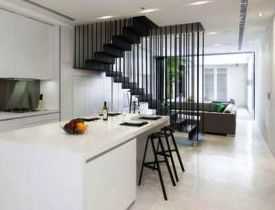Description
Course Name: Diploma in Interior Designing Business
Course Id: DIDB/Q0001.
Eligibility: 10th Grade (high school) or Equivalent.
Objective: The Diploma in Interior Designing Business course is designed to combine the art and technical skills of interior design with the essential business knowledge required to run a successful interior design practice. This course provides students with an understanding of both the creative and entrepreneurial aspects of the interior design industry. It covers not only the design processes but also focuses on the business side, including project management, client relationships, marketing, financial management, and legal aspects of running an interior design business.
Duration: Six Months.






Debit/Credit Card, Wallet, Paytm, Net Banking, UPI, or Google Pay.



• A soft copy (scanned) of your certificate via email within 7 days of examination.
• A hard copy (original with official seal and signature) sent to your address within 45 day of declaration of result.

Online Examination Detail:
- Duration- 120 minutes.
- No. of Questions- 60. (Multiple Choice Questions).
- 10 Questions from each module, each carry 10 marks.
- Maximum Marks- 600, Passing Marks- 40%.
- There is no negative marking in this module.
| How Students will be Graded: | ||
| S.No. | Marks | Grade |
| 1 | 91-100 | O (Outstanding) |
| 2 | 81-90 | A+ (Excellent) |
| 3 | 71-80 | A (Very Good) |
| 4 | 61-70 | B (Good) |
| 5 | 51-60 | C (Average) |
| 6 | 41-50 | P (Pass) |
| 7 | 0-40 | F (Fail) |







Syllabus
Introduction to Interior Designing Business: Scope and Importance of Interior Design Business, Understanding Market Trends in Interior Design, Key Roles and Responsibilities of an Interior Designer, Essential Skills for a Successful Interior Designer, Career Opportunities and Specializations, Setting Up an Interior Design Business, Understanding Client Needs and Preferences, Importance of Creativity and Innovation, Ethics and Professionalism in Interior Design, Case Studies of Successful Interior Design Businesses.
Principles and Elements of Interior Design: Understanding Space Planning, Role of Colors in Interior Design, Texture and Material Selection, Balance and Harmony in Design, Contrast and Emphasis in Interiors, Importance of Proportion and Scale, Lighting Techniques for Aesthetic Appeal, Furniture Placement and Arrangement, Indoor Plants and Eco-Friendly Interiors, Latest Trends in Interior Design Styles.
Design Process and Project Planning: Steps in Interior Design Project Execution, Importance of Concept Development, Creating Mood Boards and Design Concepts, Preparing Detailed Floor Plans, Use of CAD Software in Interior Design, Budgeting and Cost Estimation, Material and Resource Procurement, Timeline and Workflow Management, Client Presentations and Approvals, Post-Project Evaluation and Feedback.
Residential Interior Designing: Designing Living Rooms, Bedroom Design and Space Optimization, Kitchen Layout and Functional Design, Bathroom Aesthetics and Storage Solutions, Home Office and Work-From-Home Spaces, Smart Home Technology Integration, Wall Treatments and Decorative Accents, Flooring Solutions for Homes, Designing Kid-Friendly Spaces, Sustainable and Eco-Friendly Home Designs.
Commercial and Office Interior Designing: Understanding Commercial Space Planning, Office Interior Design Trends, Retail Space and Store Layouts, Hospitality and Hotel Interior Designing, Healthcare and Wellness Center Interiors, Co-Working and Collaborative Workspaces, Signage and Branding in Interiors, Acoustics and Soundproofing in Offices, Safety and Accessibility in Commercial Spaces, Case Studies of Iconic Commercial Interiors.
Furniture and Furnishings: Types of Furniture and Their Functions, Custom Furniture Designing, Selection of Upholstery and Fabrics, Importance of Ergonomics in Furniture Design, Sustainable and Recycled Furniture, Smart and Modular Furniture Trends, Furniture for Small Spaces, Luxury vs. Budget-Friendly Furniture Options, Role of Antiques and Traditional Elements, Maintenance and Upkeep of Furnishings.
Job Opportunities after completion of Diploma in Interior Designing Business course:
Graduates of the Diploma in Interior Designing Business program possess creative skills, technical knowledge, and business acumen to design functional and aesthetically pleasing spaces. These skills open up numerous career opportunities in the growing interior design industry in India, which spans residential, commercial, and industrial projects. Here’s a detailed overview of career options and salary ranges:
1. Interior Designer
Role: Design interior spaces, including homes, offices, and retail stores, focusing on aesthetics, functionality, and client preferences. Salary Range: ₹3,00,000 – ₹8,00,000 per year
2. Space Planner
Role: Optimize the use of space for maximum functionality, particularly in urban or commercial settings such as co-working spaces and malls. Salary Range: ₹4,00,000 – ₹9,00,000 per year
3. Residential Interior Designer
Role: Focus on designing homes, including living spaces, bedrooms, kitchens, and bathrooms, tailored to client tastes and lifestyles. Salary Range: ₹3,00,000 – ₹7,00,000 per year
4. Commercial Interior Designer
Role: Design interiors for offices, retail outlets, and other commercial properties, emphasizing branding, space optimization, and user experience. Salary Range: ₹4,50,000 – ₹10,00,000 per year
5. Furniture Designer
Role: Create custom furniture designs that align with overall interior themes and client requirements. Salary Range: ₹3,00,000 – ₹7,00,000 per year
6. Lighting Designer
Role: Specialize in designing lighting solutions that enhance the ambiance and functionality of spaces. Salary Range: ₹4,00,000 – ₹8,50,000 per year
7. Freelance Interior Designer
Role: Work independently, taking on diverse projects ranging from home renovations to boutique designs. Salary Range: ₹2,50,000 – ₹12,00,000 per year (depends on client base and project scale)
8. Set Designer
Role: Design sets for film, television, theater, or events, ensuring visual impact and alignment with creative themes. Salary Range: ₹3,50,000 – ₹10,00,000 per year
9. Exhibition Designer
Role: Design displays and exhibition spaces for trade shows, art galleries, or promotional events, balancing aesthetics and functionality. Salary Range: ₹4,00,000 – ₹8,00,000 per year
10. Retail Store Designer
Role: Plan and design retail spaces to enhance customer experience and promote brand identity. Salary Range: ₹4,50,000 – ₹9,50,000 per year
11. Project Manager (Interior Design)
Role: Oversee interior design projects, managing budgets, timelines, and coordination with contractors and suppliers. Salary Range: ₹6,00,000 – ₹12,00,000 per year
12. Visual Merchandiser
Role: Create visually appealing displays in retail stores to attract customers and drive sales. Salary Range: ₹3,50,000 – ₹7,00,000 per year
13. 3D Visualizer
Role: Use software to create realistic 3D renderings and models of interior design concepts for client presentations. Salary Range: ₹3,00,000 – ₹6,50,000 per year
14. Sustainable Interior Designer
Role: Focus on eco-friendly and sustainable design practices, using energy-efficient materials and promoting green architecture. Salary Range: ₹4,00,000 – ₹8,50,000 per year
15. Interior Styling Consultant
Role: Offer styling advice to clients, focusing on selecting decor elements like furniture, fabrics, colors, and accessories. Salary Range: ₹3,00,000 – ₹6,50,000 per year
16. Real Estate Staging Specialist
Role: Stage homes or commercial properties for sale, creating attractive interiors to increase market appeal. Salary Range: ₹3,50,000 – ₹7,00,000 per year
17. Corporate Office Designer
Role: Design office spaces focusing on ergonomics, functionality, and employee well-being to enhance productivity. Salary Range: ₹4,50,000 – ₹9,50,000 per year
18. Interior Business Owner
Role: Start and manage your interior design firm, offering end-to-end design solutions to clients. Salary Range: ₹5,00,000 – ₹20,00,000 per year (depends on business success)
19. CAD Designer
Role: Use computer-aided design (CAD) software to create technical drawings and plans for interior projects. Salary Range: ₹3,00,000 – ₹6,00,000 per year
20. Hospitality Interior Designer
Role: Specialize in designing interiors for hotels, resorts, and restaurants, focusing on creating luxurious and inviting environments. Salary Range: ₹4,50,000 – ₹10,00,000 per year
Factors Influencing Salary:
- Experience: Beginners earn less, while experienced professionals command higher salaries.
- Location: Designers in metropolitan cities like Mumbai, Delhi, or Bengaluru earn more due to high demand.
- Specialization: Expertise in niches like sustainable design or 3D visualization can increase earnings.
- Portfolio Quality: A strong portfolio showcasing diverse and innovative projects attracts premium clients.
- Client Base: Freelancers and business owners can significantly increase their income with a large or high-profile clientele.
Career Growth Path:
- Entry-Level Roles: Assistant Interior Designer, CAD Designer
- Mid-Level Roles: Project Manager, Commercial Interior Designer
- Advanced Roles: Interior Design Firm Owner, Sustainable Design Expert
Industry Trends:
The demand for interior designers in India is growing due to urbanization, increased real estate activity, and a focus on personalized spaces. Opportunities are particularly strong in commercial projects, luxury interiors, and eco-friendly designs. A diploma in interior designing positions graduates for a thriving and lucrative career in this creative and dynamic field.







Reviews
There are no reviews yet.